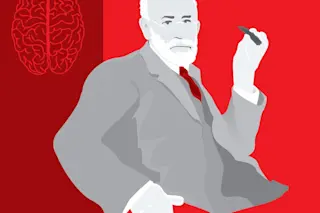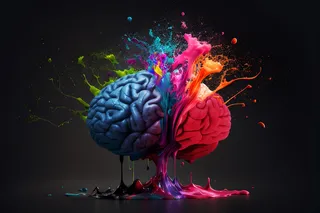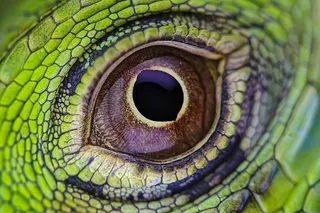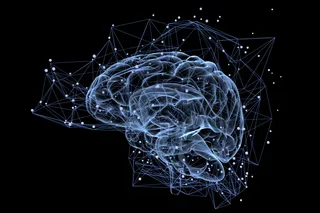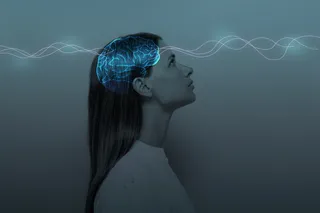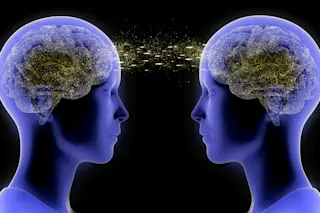The party is at a trendy Harlem restaurant, in the private rooms downstairs. It is crowded and, for a science event, glamorous. Many women are in sparkly cocktail dresses. Men are wearing expensive ties. Everyone has fashionable eyewear. Over at the bar is the goateed Joe LeDoux, known for his groundbreaking research on fear, as well as for his rock ’n’ roll band of scientists. The celebrity chef who owns the restaurant is personally greeting guests.
This gathering is unusual for other reasons. A benefit for the Neuropsychoanalysis Foundation, it is celebrating the idea that psychoanalytic concepts like repressed impulses and unconscious drives remain important and relevant in this era of the neurobiological study of the brain. If that seems surprising, so will this: Sigmund Freud, the creator of psychoanalysis, actually began his career as a neurobiologist, dissecting the nerves of crayfish.
But in his late 19th-century era, brain science was primitive. Even the basics of how a neuron worked were still mysterious. Freud abandoned objective science, developing a subjective approach to understanding the mind based on what his unhappy patients told him about their inner lives. Psychoanalysis, the discipline he created, began as a technique to help miserable people. It became the 20th century’s single most influential theory about the human mind.
Sigmund Freud's Theory Revolutionized the Study of the Mind
Freud’s theory, which he formulated in the 1890s and revised repeatedly, was both comprehensive and radical. Its bottom line is that we do not know ourselves. In his formulation, the mind constantly generates powerful wishes that are repressed — shut down by our own internal censors before we even become aware of them. Much of what we do and think is shaped by these unconscious impulses, unbeknownst to us. Dreams, slips of the tongue and psychiatric symptoms are the result of desires distorted by the mental censors. In the “talking cure” — the practice of psychoanalysis — the therapist helps the patient notice these mental lapses, interpret the unconscious struggles they reflect and bring them into the light of self-awareness.
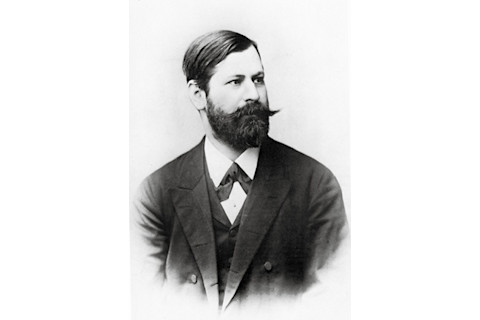
A young Freud actually started out as a neuroscientist. The Granger Collection, NYC
After Freud, psychoanalysis fractured into many schools of thought, but the idea of an inner world of unconscious conflict, and the notion that subjective experiences are meaningful and important, remain at the core of this view of human nature. Meanwhile, neurobiology — the scientific study of the physical brain — evolved in the other direction. Neuroscience focused on the nuts and bolts of the brain: how nerve cells communicate with electrical and chemical pulses, how brains learn and calculate and remember. But neuroscience avoided subjective experiences, sticking to what it could measure and observe.
The Clash Between Psychoanalysis and Neuroscience
By the end of the 20th century, the two disciplines, psychoanalysis and neuroscience, did not even seem to be talking about the same thing. Psychoanalysis was hostile to the idea of testing hypotheses through experiments. Neuroscience claimed to explain the brain but ignored its finest product: the dazzling, intimate sensations of human consciousness.
That is both a shame and an amazing intellectual opportunity, says the South African neuropsychologist and psychoanalyst Mark Solms, co-chair of the International Neuropsychoanalysis Society. Neuropsychoanalysis is his life’s project, and more than any other single person, this is his party tonight. He roams about the room, kissing women on both cheeks, bear-hugging old friends. If he seems a bit like an evangelist on the hunt for converts, it’s for good reason. Solms is convinced that reconnecting psychoanalysis and neuroscience is absolutely essential — the only way we will ever truly understand the brain.
The point is not to prove that Freud was right, but to apply the techniques of modern biology to explore some of his most enduring ideas. It’s to put the study of the mind back in the study of the brain, says Solms: “What neuropsychoanalysis is all about is this: How does the actual stuff of being a person relate to the tissue and physiology and anatomy and chemistry of the brain?” Psychoanalysis has insightful, provocative theories about emotions, unconscious thoughts and the nature of the mind. Neurobiology has the ability to test these ideas with powerful tools and experimental rigor. Together, the two fields might finally answer the most elusive question of them all: How is it that dreams, fantasies, memories and feelings — the subjective self — emerge from a hunk of flesh?
Mark Solms’ Lifelong Mission to Understand Consciousness
Solms’ intellectual crusade was launched by a childhood trauma. As a child, he loved and revered his older brother Lee. But when Solms was 4, Lee fell off the roof of the local yacht club and hit his head, seriously injuring his brain.
When Lee came home from the hospital, he had changed. He had no interest in the elaborate fantasy games that the brothers used to play. He was lethargic and slow, and he had to wear a helmet. He seemed like a different person.
Mark was devastated. He had lost his best friend. But his crisis was also existential. How could a person’s identity be snuffed out so easily, just by a blow to the head? The shock shaped Solms in ways he would not recognize for years to come. When he began college in 1980, he studied medicine and brain science, planning to help people like his brother. But he was also seeking answers to the question that haunted him: How can it be that a physical organ — a piece of meat — determines who we are?
He soon found out, to his dismay, that neuroscientists at that time did not probe the mystery of the self. Faced with the complexity of the brain, neuroscience focused on questions that could be subdivided into manageable units: How we see, how we move, how nerve cells work. The vivid experience of selfhood, the swirl of being, was not on the curriculum.
Yearning for answers, Solms wandered into a university philosophy seminar on Freudian dream theory. Our minds are divided, the lecturer explained. Roiling beneath the surface are the primal drives of the id — the mental force that Freud said generated unconscious lust, aggression, hidden fantasies and wishes. The mental mechanisms of the ego struggle to contain this mad turmoil. One result of this constant battle: the twisted, distorted narratives in dreams. The lecturer also described Freud’s abortive attempt to ground psychology in neurological observations about the brain.
It was an awakening. Finally, here was someone trying to think systematically and scientifically about the real matter of inner life. “Here was this philosopher talking about dreams, fantasies, wishes, sex,” says Solms. “I thought, ‘That’s life! This means me!’ ” Eagerly, he asked his neurobiology professors which scientists were studying these ideas now, in light of modern research. The answer: nobody. Such topics are not appropriate for science, the young Solms was told. “Don’t ask these questions,” a professor warned him, trying to be helpful. “It will damage your career.”
Solms had run headfirst into an ideological roadblock. At the time, psychoanalytic ideas still guided the treatment of the mentally ill. But lab scientists engaged in brain research — the neuroscientists — rejected psychoanalysis whole cloth. There were no experiments — no objective data — to show it made any sense at all.
By the 1980s, Freud-bashing was a well-established sport in neuroscience. Harvard neurobiologist J. Allan Hobson used recordings of brain activity from sleeping people to gleefully trash psychoanalytic dream theory, and by implication, the central Freudian ideas of censorship and repression. The nonsense in dreams is caused by random electrical noise in nerve cells, asserted Hobson, a kind of cellular static; repression had nothing to do with it. Psychoanalysis belonged “on the junk heap of speculative philosophy,” he wrote. He might as well have danced on Freud’s grave.
Examining the Divide Between Emotions and Neuroscience
Solms was undeterred. After he finished his doctorate degree in 1992, he was faced with being drafted into the white South African military. He left for a job as a neuropsychologist in the U.K., treating people with strokes and other brain injuries. By day, he was a conventional doctor in the neurosurgical rehab ward at the Royal London Hospital. By night, he studied to become a psychoanalyst.
He thought that some of what he was being taught was speculative and dogmatic. But at least it recognized that the real mystery of the brain was an existential one. It posed the crucial question of what it means to be a mind that thinks. To disregard this problem, as neuroscience did, was a massive intellectual error, Solms believed. It would be like trying to study the solar system while pretending gravity doesn’t exist. Any answers you get are bound to be wrong.
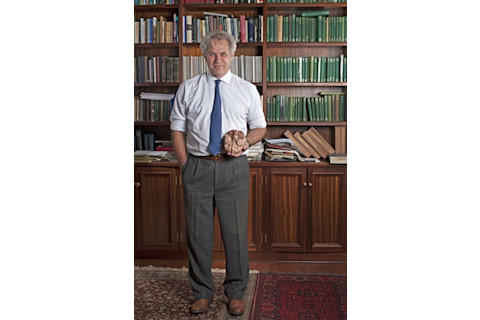
Neuropsychologist Mark Solms, here in his office in Cape Town, South Africa, says Freud's ideas may resolve many mysteries of the brain. Martin Van Niekerk
As all shrinks-in-training are still required to do, Solms went through analysis himself: five days a week for nine years. Like other types of psychotherapy, psychoanalysis focuses on emotions and explicit beliefs about the world. Unlike the briefer forms of counseling that are now more common, it also explores unconscious thoughts and feelings, the wishes, memories and other self-involved thoughts constantly bubbling beneath the surface.
In Freud’s model, the relentless efforts by other parts of the mind to control these potentially destructive notions and impulses can lead to crippling symptoms such as anxiety, depression and pervasive misery. The analyst helps the unhappy patient notice destructive patterns in his own life, especially where he avoids painful memories or feelings. “Analysis is about having somebody help you to face facts that you would rather not face up to,” says Solms. In practice, this talking cure translates into deep self-knowledge.
Facing the Power of Repressed Emotions
For Solms, the experience was liberating. It helped him finally recognize how much his brother’s injury had affected him. Lee never regained his lost abilities, and to this day he struggles with his mental impairments. Out of sympathy with his brother, Mark went through childhood filled with guilt about growing up, of learning and achieving and doing things his brother would never be able to do. He held himself back. Only in analysis did he realize how he’d avoided his own ambitions. He realized it was time to take on the intellectual project he’d been preoccupied with his whole life: studying the human mind with rigor and precision.
He began planning how to scientifically scrutinize psychoanalytic concepts, starting with Freud. At the same time, Solms began using techniques from analysis to help his brain-injured patients cope with their confusion and fear. Some had lost most of their memories. Others couldn’t speak or walk. Some no longer had any idea who they were. From the perspective of most doctors, a psychotherapy approach was bizarre: These patients’ minds didn’t need help because it was their brains that were broken. Yet to Solms, it made perfect sense. Someone whose life has been shattered clearly needs counseling as well as medical treatment. He sat down with his patients and listened to their experiences.
Bridging Brain Injury and Mental Health
Studying how brain damage affects thoughts and behaviors is one of the oldest techniques in neuroscience. Solms began to systematically evaluate the hallucinations and delusions of his patients in the light of Freudian concepts like denial and wish fulfillment. Simply put, these two ideas propose that we prefer to see the world as we wish it were, rather than as it truly is. Facing the facts is difficult, requiring sustained mental labor and a high-functioning brain. A person who cannot sustain this effort winds up living in a fantasy world.
Many of Solms’ patients’ brains were indeed not up to the task. Some had survived an arterial rupture, a common type of stroke that damages brain regions that organize the perception of space and time. The bewildered patient makes up ludicrous stories to explain the world, a condition called confabulatory amnesia. To Solms, it was fascinating. The mind that lurked behind the damaged brain could be seen in the details of these loopy explanations.
For example, one patient, a former electronic engineer, always greeted Solms as a fellow engineer. He told Solms and his other doctors he owned a Porsche and a Ferrari, and he frequently asked to cut short his medical visits in order, he said, to play squash. “Where’s my beer?” he would ask his examiners, searching for a glass right there in the exam room. From a neurobiological perspective, his problem was a ruptured aneurysm that had damaged his frontal lobes, impairing his ability to monitor his own memory. Psychoanalytically speaking, he was acting out fantasies — that he was a respected expert rather than a brain-damaged patient, that he drove race cars, that he was at a bar. Both explanations contained part of the truth. His brain was indeed injured, and now his mind ran wild with daydreams of freedom and pleasure.
Another patient happily told Solms that an old friend had just dropped by for a visit — a lovely surprise, he said, given that the man had been dead for decades. Others, partly paralyzed by damage to one side of the brain, denied they were affected. They were too tired to move their limbs, they’d say, or they would patiently explain to Solms that their motionless arms and legs belonged to other people. They weren’t consciously lying. They were oblivious to the problem, a condition called anosognosia.
The conventional medical explanation, that this type of brain damage causes attention deficits, did not explain why these patients generate such surreal explanations of their paralysis, Solms believed. Psychoanalysis offered a clearer rationale: Rather than face facts, these patients unconsciously chose to live out the fantasy that they are well. The content of the patients’ delusions revealed ordinary human wishes: to be competent, to be healthy, to be at home. It was poignant and fascinating. “There’s much tragedy and pain involved, but from a scientific point of view, it was like being a kid in the toy shop,” says Solms.
His insights also helped in his clinical practice. Because he thought about the emotions that must lie behind the patients’ fantasies, he could explain their odd behavior to families and talk to his patients in ways that would calm them down. Explaining patients’ bizarre delusions to them as emotional fantasies — you wish life were this way because you are frightened — could often lift their confusion. With a few colleagues, Solms conducted a systematic study of the engineer’s confabulations, finding that they were substantially positive or wishful. And he began to pair his patients’ subjective reports with their objective diagnoses, launching the scientific practice of neuropsychoanalysis.
The Role of Emotions in Rational Decision-Making
To be fair, neurobiologists had good reasons to be wary of studying inner life. Interpreting data about internal experiences is fraught with potential errors. People are notoriously inaccurate at identifying their own sensations and emotions, and words are vague. When someone says he feels good, does it mean the same as someone else who also feels good? Before the spread of neuroimaging techniques in the late 1990s, there were few objective markers of mental events. (Even today, neuroscientists’ ability to connect people’s specific thoughts and feelings to their brain signals is crude.)
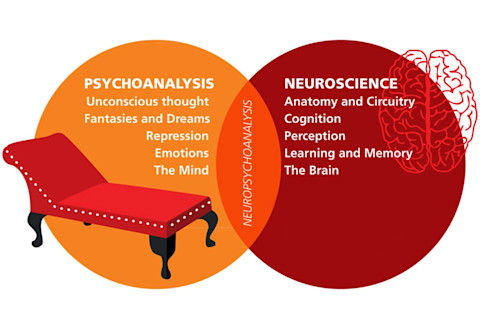
Alison Mackey/Discover
But some of the opposition was just dogmatic. Many brain researchers believed that only cognition and behavior were suitable for study. Emotions were dismissed as evolutionary detritus — primitive reflexes that interfere with more important functions like calculating, planning and reasoning.
Solms was not the only one to question this doctrine. Antonio Damasio, a neurologist and neuroscientist now at the University of Southern California, began thinking seriously about emotions after meeting a patient named Elliot. Damasio had seen many odd patients in his studies of how brain damage affects language and memory, but he’d never met someone so hard to figure out. After a successful surgery to treat a brain tumor, Elliot seemed to recover completely, but he began making terrible decisions that were ruining his life. At work, he became so obsessed with trivial decisions that he neglected important problems that got him fired. He threw money at ridiculous financial schemes, losing his life savings.
Elliot aced every personality and cognitive test, and his memory, intellect and speech were normal to excellent. Eventually, Damasio figured it out: The tumor damaged regions of Elliot’s frontal lobes responsible for emotional processing. Because he no longer knew his own feelings, he could no longer make good decisions. Damasio soon discovered other people with damage in the same regions of the brain suffering from the same problem. These observations, and the experiments that followed, led Damasio to conclude that emotions are not irrational intrusions into reason. They are intrinsic to rational thought.
At about the same time, during the 1990s, neuroscientist Jaak Panksepp was exploring the feelings of animals. Panksepp saw that human emotions and emotional problems could be explored by studying other mammals — how their brains generated emotions akin to the anger, sadness and joy that humans describe, what neurons and neural circuits were involved. Using animals as models of humans is the basis of biomedicine, but for a long time Panksepp’s work was marginalized and ignored because it focused on the internal experiences of animals, a realm supposedly inaccessible to science. “Most people truly do not understand the limits scientists impose upon themselves,” says Panksepp. “One big limit was the idea that we can study animal behavior, but we cannot understand their minds because that’s subjective.”
Panksepp persevered, identifying seven basic emotions shared by species ranging from chickens to guinea pigs to people and tracing the neural networks involved in each. He explored attachment, the intense bond between mother and child, by observing what a puppy does when it is taken away from its mother. It whines, cries and searches for her, then gives up and collapses into passive despair. The combination of panicky grief and apathy, he noted, looks a lot like the feelings of a person in the grips of depression, and he began to consider how the neural systems that ensure attachment might also cause depressive disorder. He was not a Freudian, but he was converging toward a similar idea of depression that focuses on the fear of separation and loss.
Other researchers, such as Elizabeth Phelps and Joe LeDoux (he of the goatee and guitar), were describing the way emotions influenced learning and memory, focusing on how the brain detects, analyzes and remembers threats.
Together, these research projects established that studying emotions was not only possible in the mainstream of neurobiology, but essential. As scientists like Damasio and Panksepp published influential books in the 1990s, Solms discovered he was not alone.
The Lasting Legacy of Freud's Ideas
More than a decade later, the study of emotions is a major field in brain science. Even the study of consciousness, long considered impossibly speculative, now attracts mainstream researchers. But as biologists wander into these realms, they need guidance — hypotheses to test and refine, well-thought-out concepts and questions that point the way toward useful experiments. They could do worse than look to Freud for inspiration, suggests Eric Kandel of Columbia University, a Nobel Prize-winning expert on learning and memory and one of the most respected voices in neuroscience. “Flawed as it may be, Freud’s is still a coherent and intellectually satisfying view of the mind,” says Kandel. “You can’t have a meaningful science of the brain without having a meaningful science of the mind.”
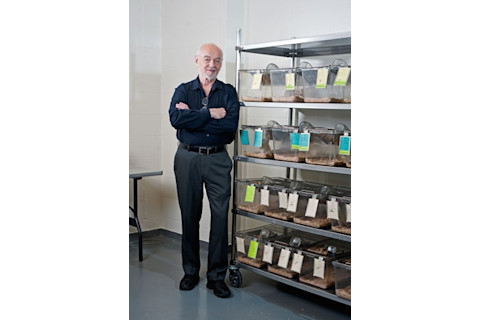
Jaak Panskepp pioneered the study of animal emotions — a subject most neurobiologists considered off-limits. Greg Ruffing
Although many details of Freud’s theories are wrong, some of his major ideas have been borne out. One of those trailblazing observations concerns the scope and influence of unconscious thought. Freud put the unconscious on the throne of the mental kingdom, but the subjectivity problem led brain scientists to ignore the plentiful evidence of unconscious mental processing for nearly a century. How could they measure mental activity that subjects weren’t even aware of themselves? It wasn’t until the 1980s that researchers began to solve this conundrum.
In a study that is now legend, cognitive scientist Benjamin Libet asked people to press a button whenever they felt like it while he monitored the electrical activity in their brains. He could see that movement-controlling brain regions become active about a quarter of a second before subjects said they’d consciously decided to push the button. Some unconscious part of the brain decided well before the conscious mind did.
Since then, thousands of studies have proven that people process most information, especially social data like other people’s behavior, unconsciously. We also make many decisions without much input from conscious thought. If anything, Freud underestimated the power and sophistication of unconscious thought, says social psychologist Timothy Wilson of the University of Virginia. The nature of unconscious thought that emerges from contemporary experiments is radically different from what Freud posited so many years ago: It looks more like a fast, efficient way to process large volumes of data and less like a zone of impulses and fantasies. But he was absolutely right to put it at the center of psychology.
Exploring Freud’s Theory of Conflict in the Mind
Another Freudian premise that reappears in current science is that our minds are inherently conflicted, the terrain of a struggle between instinctual impulses and inhibitory mechanisms. Instead of the Freudian terms id and ego, biologists use neuroanatomical descriptions: Motivations like pleasure and reward arise from circuits in the limbic system, a center of emotion, loosely parallel to the id. The prefrontal cortex handles self-control and the override of habitual responses, sort of like the ego. The difference isn’t just a matter of terminology; Freud’s id was a chaotic zone that inspired barbaric, unpredictable behavior, whereas the limbic system is tightly regulated, the origin of rigid and inflexible emotional reactions. But the big picture — of a mind at war with itself — is fundamentally the same, says Bradley Peterson, chief of child psychiatry and director of MRI research at Columbia University, who also trained as a psychoanalyst.
Freud revised his ideas many times, and even his most prescient insights only roughly anticipate scientific findings. Plus, he was often simply wrong, for example in his theories about the elaborate mental lives of infants. “The guy often makes not only errors but outlandish errors,” says Matthew Erdelyi, a cognitive psychologist at Brooklyn College with a long-standing interest in psychoanalysis. “But he also comes up with ideas that absolutely nobody else would come up with,” ideas worth further consideration.
The difficulty is selecting the ones that have merit, and testing them in a way that provides concrete answers.
Emory medical school neurologist and depression researcher Helen Mayberg explains that her work on depression strives to describe the same overarching concepts that Freud invoked, including links between brain circuits and disordered moods. “Analysis has a much richer tapestry of both words and concepts” than neurobiology, says Mayberg. “The things Freud wrote about are things that every awake person on the planet thinks about.” She has pioneered the treatment of profound depression with deep-brain stimulation, a technique that stimulates precise brain locations with electricity, but she recognizes that she cannot yet account for why some patients improve so dramatically and others do not. A psychoanalytic perspective might begin to explain this X factor — the invisible psychological dynamics that allow some patients to escape depression, while others remain trapped in misery despite the change in their brains.
How Neuropsychoanalysis Examines Eating Disorders
Neuropsychoanalysis may illuminate another mystery: the origins of anorexia. Neurobiologist Samantha Brooks at Uppsala Biomedical Center in Sweden is studying how anorexics control their desire to eat. She probes neural circuits that link inhibitory systems of the prefrontal cortex to reward systems deeper in the brain, but she says this reductionist approach does not fully explain how someone with anorexia can dampen bodily sensations of pleasure and pain. Psychoanalysis suggests the answer may lie in the interplay between physical sensations, emotions and anxiety, ideas Brooks is now exploring with brain imaging.
A neuropsychoanalytic approach, combining subjective reports and objective measurements, could be used to explore a big mystery in current neurobiology: the purpose of the recently discovered “default mode network.” This network of neural regions is active during mind-wandering, daydreaming, free association and other dreamy introspective states. It seems to be fundamental, accounting for as much as 80 percent of the brain’s energy consumption, but why it exists and what it’s for are still open questions.
From a psychoanalytic perspective, this portrait of a brain preoccupied with introspective activity sounds strikingly familiar, says Maggie Zellner, who collaborates with Solms and is executive director of the New York-based Neuropsychoanalysis Foundation. In the psychoanalytic model, our minds constantly sift through thoughts about ourselves and our experiences. Below the surface of consciousness, our minds are absorbed with ruminating over memories and feelings, dreaming up fears and fantasies of the future, generating all the raw material that the “talking cure” taps into. The activity of the default mode network might be the biological equivalent of this incessant running internal monologue, suggests Zellner — the neural phenomenon that underlies this mental experience. It’s mostly just a hunch at this point, she says, but it could lead the way to a new perspective on this neural mystery.
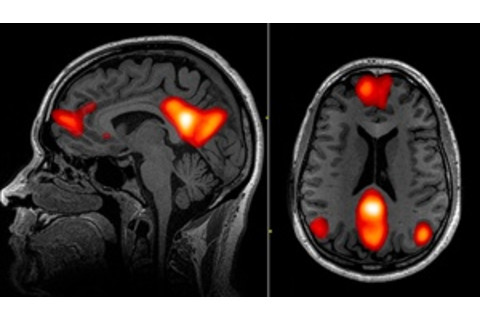
The red blobs reveal the "default mode network," regions that become active when we daydream or brood. Psychoanalysis, with its focus on inward thoughts, might help explain this puzzling activity. John Graner, Neuroimaging Department, National Intrepid Center of Excellence, Walter Reed National Military Center via Wikimedia
A Growing Movement of Research Inspired by Freud
Solms now spends much of his time in South Africa, where, as chair of neuropsychology at the University of Cape Town, he studies dreams, brain injury and related subjects, and he treats brain-injured patients. He travels to New York regularly, where the Arnold Pfeffer Center for Neuropsychoanalysis hosts public lectures presenting neurobiological work: Panksepp on his emotion research, Mayberg on her efforts to treat depression. Solms has just finished retranslating all 24 volumes of Freud’s psychological writings, a project begun in the 1990s and scheduled to be published in late 2014.
Neuropsychoanalysis is now a growing intellectual movement in its own right. It has two international organizations that give small grants to young investigators and host a world conference. In the broader world of neuroscience, Freud is no longer uniformly shunned and avoided, but is frequently seen as the author of interesting hypotheses that provoke worthwhile questions and debate.
The resurgence of Freud may also have a more profound impact. Psychoanalytic thought is fundamentally humanistic. It honors the unique experience of individual human beings — something often overlooked by the current medical approach to the mind. Solms and Panksepp, now at Washington State University, lay the blame for the generally poor quality of psychiatric treatments on that reductive mentality. They say an approach inspired by neuropsychoanalysis offers a better way.
Depression is a perfect example. The prevailing theory in biomedical research is mechanistic: Depression is just another biochemical problem, essentially no different from diabetes or gout. That approach leads to the creation of dozens of medicines that tamper with serotonin and other brain chemicals — drugs that, for more than half of patients, don’t work. “Pharma has dumped a gazillion dollars down the drain and never [has] come up with a new concept,” says Panksepp.
Like most psychiatrists, he and Solms say the place to begin is with the existential reality of depression — the soul-crushing hopelessness and despair. Their fundamental question: Why does depression feel so bad? Based on decades of Panksepp’s research, the hypothesis is that the misery of depression is related to errors in the brain mechanisms that ensure emotional attachment. For mammals, whose babies are born helpless, attachment is a life-or-death matter: A curious baby who wanders off does not last long on its own. When everything is working correctly, the terrible pain of separation is a warning, ensuring that a crying baby sticks close by. If mother and baby do get separated, despair and apathy kick in, eventually immobilizing the baby and preventing it from getting even more lost.
When these sensitive systems malfunction — perhaps overreacting to a loss that is not life-threatening — persistent, panicky grief and crushing apathy result. In humans, we call it depression. “The pain of loss and despair evolved for a biological reason,” says Solms. “It feels bad to be separated from those who care for you because this is nature’s way of making sure that you are reunited. You’ll never understand depression if you don’t see that.” Their approach focuses on the circuits involved in attachment that are sensitive to opiates and related compounds. Unhappy puppies can be soothed by morphine and similar drugs that alter neurochemistry in the circuits involved in the distress of separation.
Based on this idea, a non-addictive morphine derivative called buprenorphine (often prescribed to treat pain or opiate addiction) is now being tested in suicidal people with good early results. “It’s not as if we’ve cracked depression, but we’re on the verge of a whole new era,” says Solms. In Solms and Panksepp’s vision of the future, depression treatment might blend various types of therapy — sometimes including psychoanalysis — with drug regimens designed to target the neural circuitry involved in a well-understood emotional response.
Whether or not Freud is vindicated by modern science, that humane perspective may be the most enduring contribution of neuropsychoanalysis. It is what inspires Solms as he tries to understand the mental realities of his neurological patients. “What is most significant about the brain, in comparison to other bodily organs, is that it’s not just an object but a subject,” says Solms. “To truly recognize that has massive implications. That’s really what’s motivated me consciously in my scientific life.” We must embrace the fact that a brain is also a mind, that it thinks, it experiences, it suffers. In a word, that it is us.
Read More: 10 Famous Scientists and Their Contributions


